During the Eastern holidays of 2016, Erika and I spent four days in the Var with my main mission: finally finding Carabus solieri. On a previous attempt, during the summer holidays of 2015 I already spent 8 days in the National Park of the Mercantour in the French Alpes Maritimes. This is supposed to be the core area of the distribution of the highly localised Carabus solieri. Despite working very hard to find the species, I failed to find any specimen. So I decided to give it another chance in 2016 in the Var, a premontane area in the South-east corner of France.
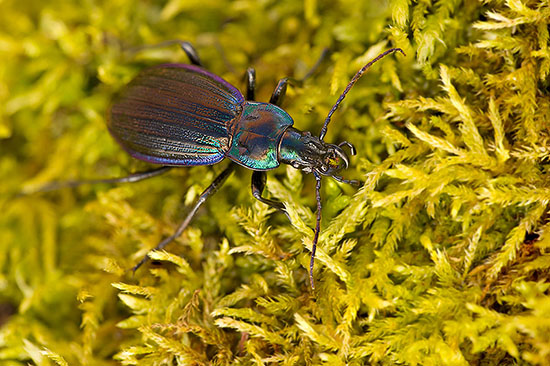
The ecology of Carabus solieri
To understand why the species can be so tough to find, despite being quite abundant in some years, some facts about the ecology and distribution of the species.
Carabus solieri occurs In the South-east of France and in the adjacent Italian montane areas. The species can be found in the lower premontane areas in the Var at altitudes of 400 metres above sealevel as well higher up in the mountains. At the lower altitudes Carabus solieri is strictly a forest species, which can be found in different types of forest, as long as they are humid enough. In the Alpes Maritimes the species occurs in conifer forests, shrubby areas, and deciduous forests ranging from 600 metres till 2000 metres above sea-level. During the summer the species can even be found in the Alpine meadows above 2000 metres. The habitat where the species reaches his highest densities are the humid deciduous forests, with plenty of small sources, rivulets, humid gullies and rocky areas. The species occupies more or less the same habitat in the Italian Ligurian Alps.As many Carabus species, Carabus solieri is mainly a spring species, but its activity highly depends on the altitude and rainfall. In the lower areas of its range the species can already be active during March, when the temperature at night is high enough and the weather is humid. The species activity shifts to the subsequent months when occurring at higher altitudes. During the summer the species is only active at the highest altitudes in the Alpine meadows, or in the highest forest ranges when there is enough rainfall. In most of the areas where the species occurs, the rocky calcareous soil is very well drained and quickly becomes very dry when there is no rain. The species mainly hunts on snails, slugs, worms, which are active at night and which are far more abundant during humid nights. During years with lots of rain during spring, the species has a longer activity period and hence, there will be more successful reproduction. During the next year, when the adults will emerge and when there is again enough rain during the spring, the adults can be quite abundant. During years with long periods without any rainfall, the numbers of active adults can be extremely low. The adults will then hide deep into the soil, till it starts to rain again. This has also an effect on the abundance of the next genereation, as the reproduction ratio is much lower during the dry years.
This is exactly what happened to me in 2015. July was extremely hot, with temperatures well above 30°C at an altitude of 1700 metres and it hadn’t rained for almost two months. I spent two full afternoons placing 90 life traps in forested areas with suitable habitat, but all in vain… I spent about four afternoons intensively looking under rocks and logs where the species sometimes hides, but again with no result at all.
Carabus vagans, a nice surprise
When we arrived during the last week of March in the Var, things looked pretty promising: it was 20 °C and it had been drizzling for several hours. On a first stop around Fréjus I found a Carabus vagans in a marshy area with a mosaic pattern consisting of grazed patches, shrubs and bare soil. Carabus vagans is also a restricted range species occurring in the South-east of France and North-west of Italy. This was also a new species for me, which I had been hoping to find. You can have a look under here at the species.
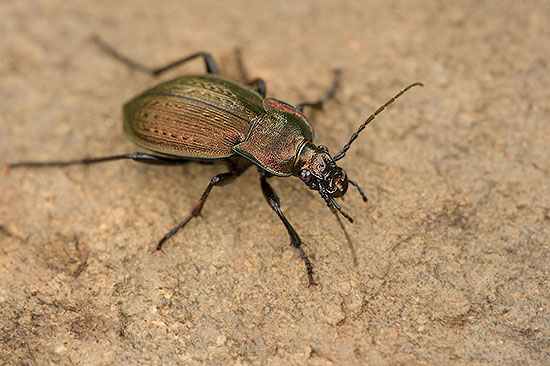
Another splendid species which was very abundant in the marshy area, is Chlaenius chrysocephalus. Under here two images from this species.
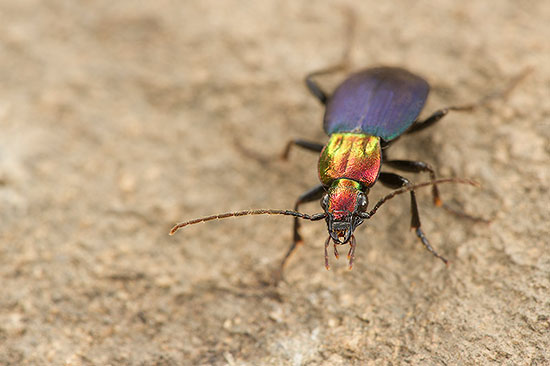
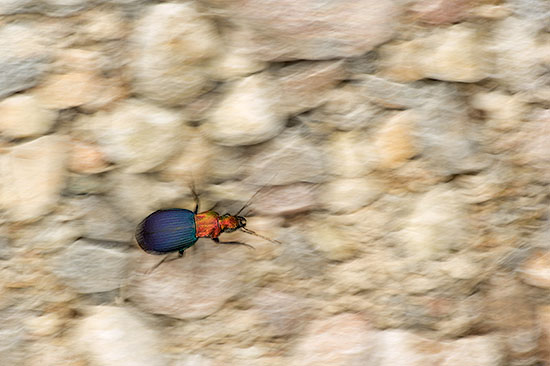
Superb garden with orchids
When we arrived at our ‘Chambre d’ Hotes’ in Callian, we were very charmed by the garden. It was an old Olive grove on a splendid calcareous meadow, with plenty of interesting flowers. Under here some images from subsequently Himantoglossum robertianum, a large Mediterranean orchid, Anemone hortensis, and Grape Hyacinth – Muscari botyoides.
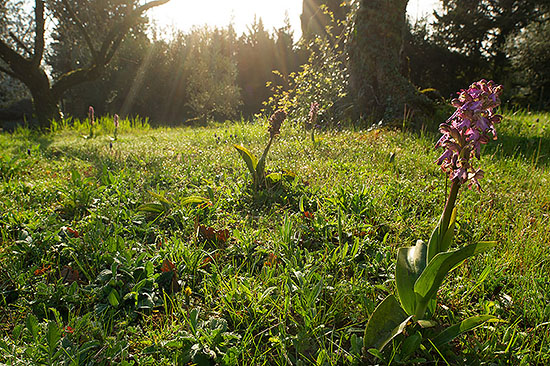
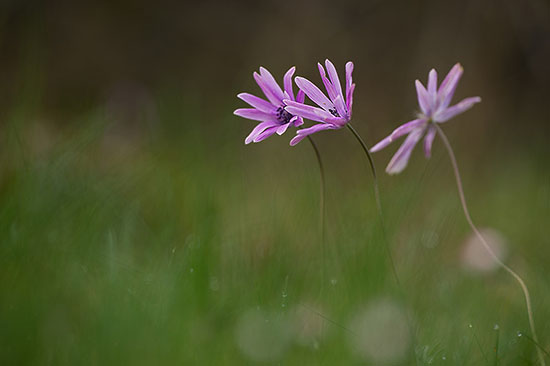
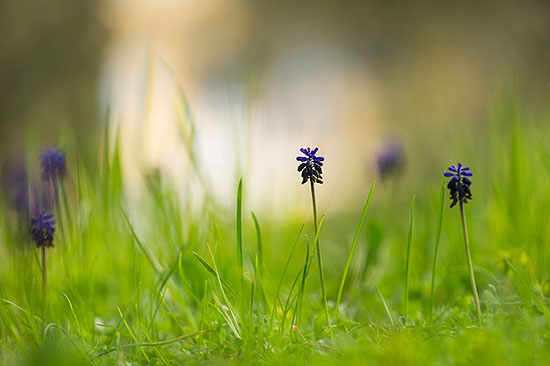
Under here , an image from Ophrys virescens, a Mediterranean Spider Orchid species.
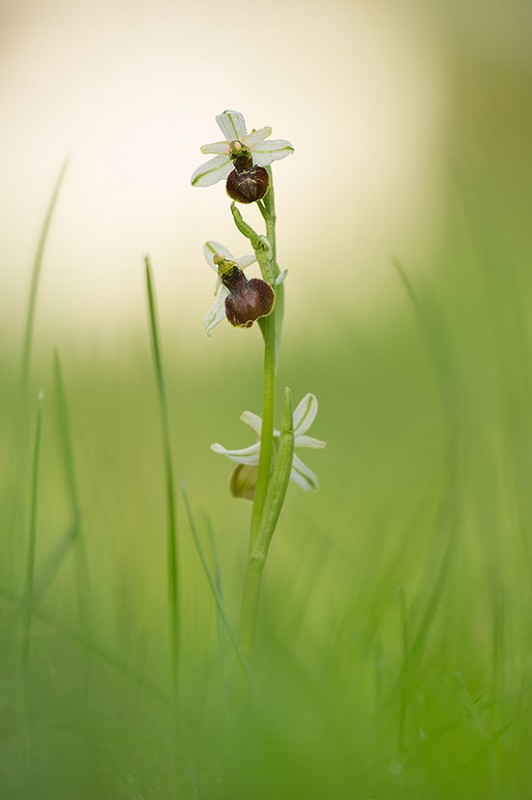
Start of the Carabus solieri quest
So far everything looked promising and things were going smooth, but then I got confronted with a sudden change in the weather forecasts: temperatures seemed to be dropping down, and the nights were going to be very cold (around 5°C). This was the worst case scenario, as the Carabus solieri would then probably not be active at all during night. Despite this fact I placed thirty life traps and spent three afternoons searching under logs, rocks in some decaying wood snags, etc… But again, all in vain. After checking my life traps after two days, I found them almost empty. Almost no ground beetles, no snails, and no early spring beetles such as some dung beetles, … This meant no prey for the Carabus solieri and probably no activity of small insects at all during the cold nights. Under here some images from two of the few Beetles I came across: Helops rossi and Dardarus tristis, both Darkling Beetle species inhabiting dead wood.
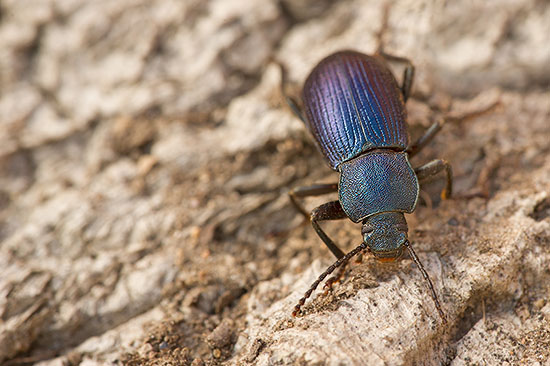
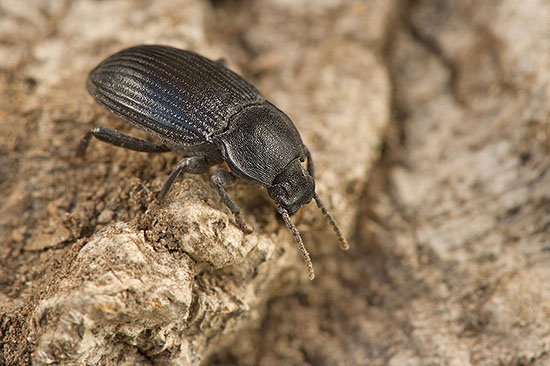
The next images illustrate some of the local deciduous forests around Saint-Cassien-des-Bois, and a Hard Shield Fern, Polystichum aculeatum.
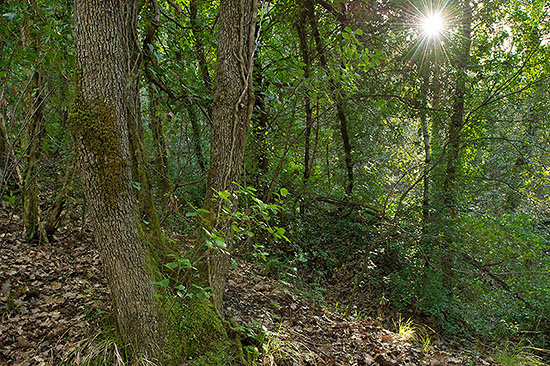
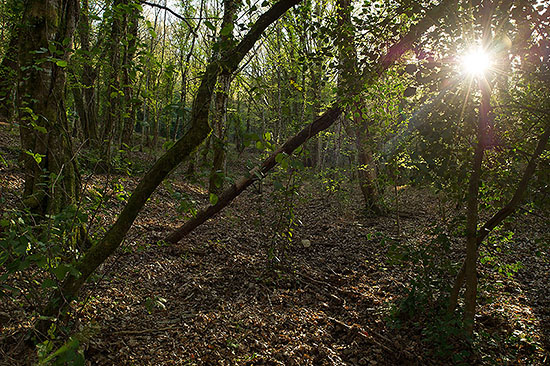
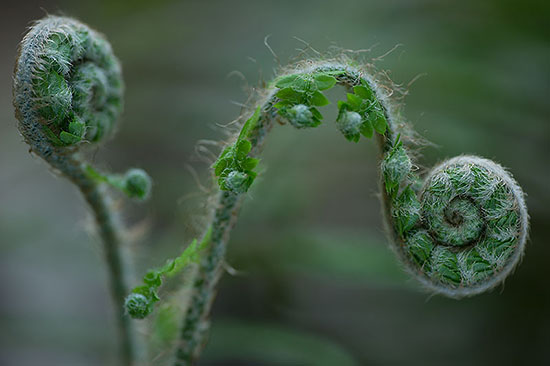
Getting slightly frustrated, and realising chances were getting very high I would dip the species again, I finally decided to try out plan B: a night walk in suitable habitat. The last night of our stay temperatures would be slightly higher, around 13°C and the day temperatures would be around 25°C. During my afternoon quests I found a mixed Oak-Hornbeam Forest, with plenty of small gullies with rivulets holding water.
Under here some images from the typical Carabus solieri habitat.
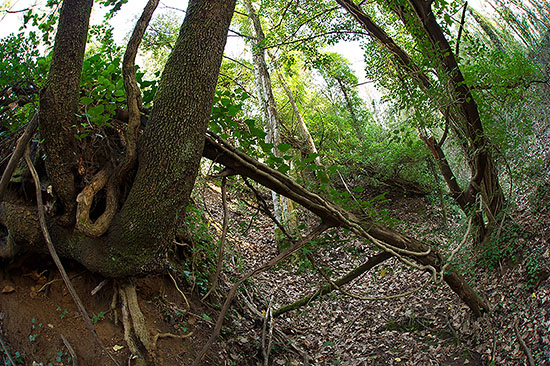
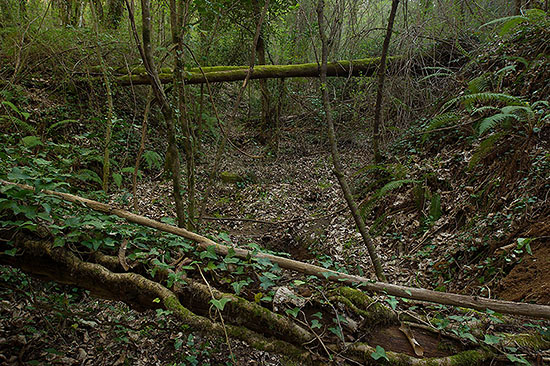
The ultimate attempt, a night quest
This was definitely the spot where I would have the best chance of finding any Carabus at night. During a two hour walk along a small forest trail in the suitable habitat, I didn’t notice any beetle activity at all. The only invertebrates I came across during the entire walk, were two Roly-Polies… My wife already wanted to head backwards, but I convinced her to try to go off trail and follow two gullies towards the river. After reaching the areas of the first gully holding water, I finally noticed some signs of life: many smaller Carabid beetles, such as Bembidion and Notiophilus species were active and there were several snails and slugs crawling slowly around! But still no Carabus signs… I had almost given up when I entered the second gully. As the bank was quite steep and the gully pretty deep, I decided to scan from above the other side of the gully with my binoculars, while I held the torch at the same height of my bins. Hurray! I noticed on the other side some reflections, at closer inspection this seemed to be a colourful Carabus head emerging from under the leaves. While Erika held the torch aimed at the beetle, I carefully climbed down the steep bank, crossed the river and again, YES, it was a splendid female Carabus solieri! In the end, ‘dogged does it’! I felt a big relief and I was really satisfied that all my efforts got finally rewarded. I captured the Carabus solieri female and after having made some photographs during the next day, I released her again. Under here, the images from this greenish and blue colour morph of Carabus solieri.
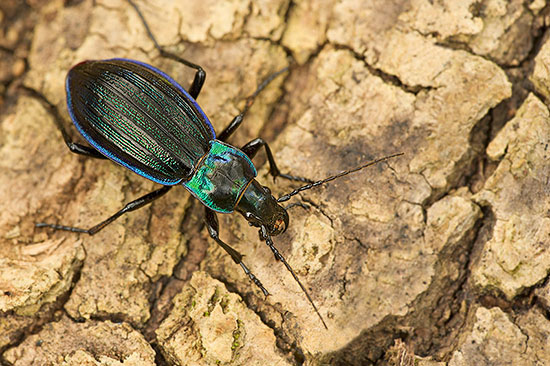
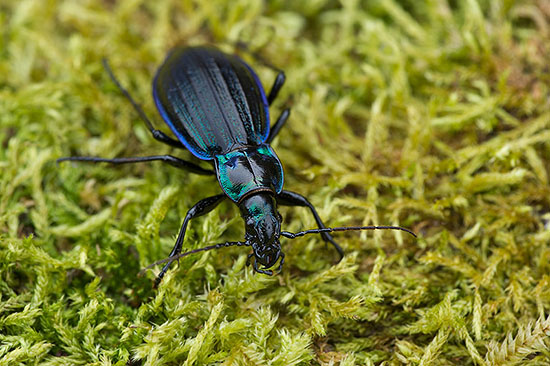
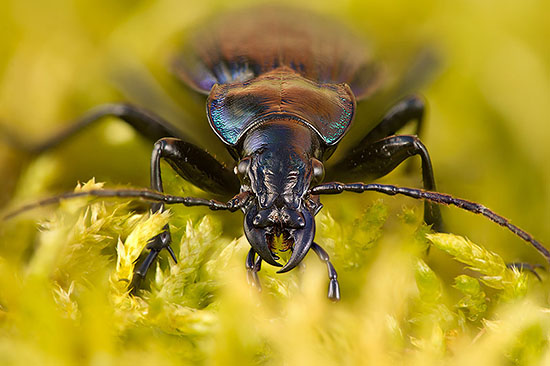
For those interested in larger scale images, please have a look at my stock photography and images from Le Var.
